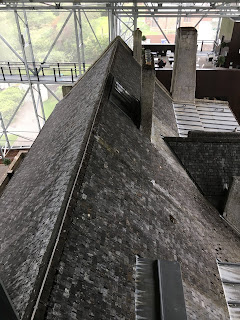Almost a year ago I posted a blog about my visit to the Star Wars toy exhibition that took place on the former Palitoy site in Coalville, Leicestershire. In this year's exhibition, many of the other toys that Palitoy are also remembered for were being showcased: Action Man, Care Bears, Girl's World and Pippa.
A few Star Wars toys were included too, such as the Death Star play setting and the Imperial Troop Transporter.
I grew up in North West Leicestershire so all of the Palitoy toys were very familiar to me. Most people who lived in or near Coalville knew of somebody who worked at the factory, so Palitoy toys were usually given at Christmas. There was a factory shop in Owen Street - the building still stands today. Like everything you grow up with, I imagined the Palitoy factory would always be there. Then - suddenly it had gone.
One of the big events every year in Coalville was the Trade Exhibition. I attended a few of these as a kid. You could see what new toys were being introduced each year, as businesses tried to predict what was going to be 'the next big thing'. I recall the Merlin game being on display there.
On end-of-term school days when children were allowed to bring their toys in, I remember Strawberry Shortcake, Pippa, and Girl's World being brought in when they were popular.
My personal favourites were Action Man, Pocketeers and the Treehouse. I didn't have one of these but coveted one. However, I did have a Treehouse Playground, which was great fun too.
 |
| Action Man dressed as a coal miner: In recognition of Coalville's industrial heritage |
 |
| Pocketeers fishing game |
What a great nostalgic exhibition!


















































